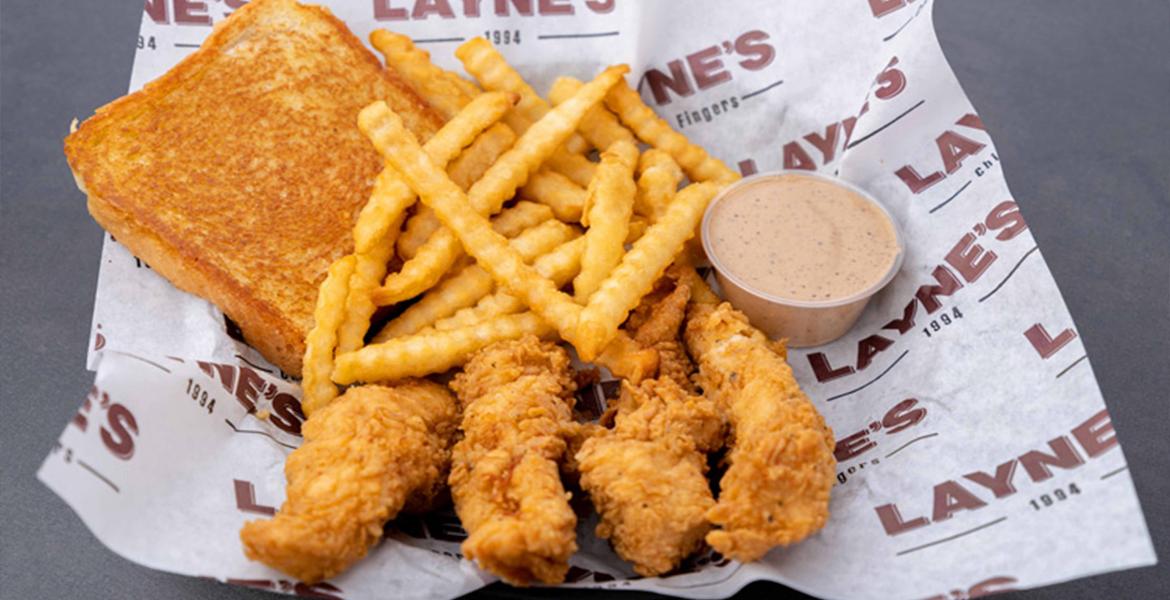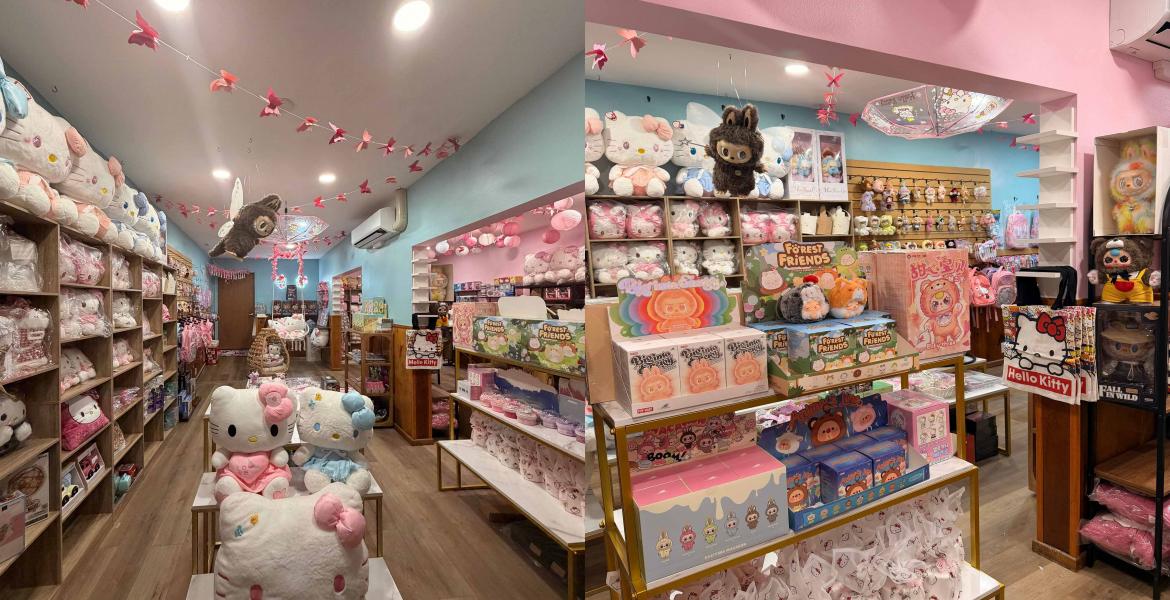SAN ANGELO, TX — David Hirschfeld sat behind his desk on the top floor of the San Angelo Bank Tower, also known as the Wells Fargo Building. Around him were plaques, honors, and models of his earlier days as the head of Hirschfeld Steel, the iconic San Angelo company his father founded. David grew Hirschfeld Steel into a national and international steel fabrication and construction company.
Today, two of his sons, David, Jr. and Wendall are Vice Presidents. His third son, Kendall spent the first 25 years of his professional career working for his father before going out on his own with his own company, West Texas Fire and Industrial Supply.

Above: Kendall Hirschfeld, David Hirschfeld, Jr., David Hirschfeld, Sr., and Wendall Hirschfeld. (LIVE! Photo/Joe Hyde)
Now, David his brother Dennis, and all of their sons were taking a victory lap. Hirschfeld Industries, the present name of the company David grew from his father’s small welding shop in north San Angelo into the go-to prime subcontractor for steel structures for many of the country’s signature projects, was being acquired by Alleghany Capital Corporation, a holding company that will combine Hirschfeld with its existing steel fabrication company, WWSC Holdings in Oklahoma City.
Before this week’s acquisition announcement, Hirschfeld was known for many signature projects around the U.S., like the remaking of Soldier Field in Chicago, the “Crystal Palace,” also known as the Infomart in Dallas, the new Kyle Field at Texas A&M, other NFL stadiums like Levi’s Stadium where the San Francisco 49ers play, many of the newer Las Vegas hotels along the strip, and signature bridges across many of America’s waterways.
David Hirschfeld joined the company during its humble beginnings in 1962. But before that, his father, L.W. Hirschfeld laid the groundwork for what was to come.
L.W. grew up in north San Angelo on a 10-acre farm that is now underwater, underneath the O.C. Fisher Reservoir with the school he attended named the Pulliam School. That school is underwater too.
L.W. set out to become a welder after World War II and learned the trade on a welding crew for the Humble Oil pipeline that connected the Permian Basin and its oil production with the Gulf of Mexico at the Port of Houston. After gaining experience there, L.W. opened a small welding shop named Hirschfeld Welders at N. Chadbourne and 26th Streets. This was 1946.
Like many San Angelo entrepreneurs, L.W. also built homes, mostly in north San Angelo. “He built six houses along 27th Street,” recalled David.
Home construction led to commercial construction, and L.W. hired a bookkeeper and an apprentice.
“I was the number five employee for the company,” recalled David. He joined after obtaining a B.S. in Civil Engineering at Texas Tech University in Lubbock in 1962.
David remembers the breaks fellow San Angelo businessmen gave him and his father as the small welding shop grew. George Alexander hired the Hirschfelds to fabricate the steel structure underneath the Stadium Park Shopping Center and Gibson’s (now Westlake Hardware) on Knickerbocker Road. By the 1970s, San Angelo oilman Frank Pool continuously hired Hirschfeld to work on his oilfield projects west of San Angelo.
By 1972, David and his father had grown Hirschfeld to 15 employees, and “It was a momentous year because we passed $1 million in (annual) sales for the first time,” David said. Many of those employees from the 1970s are retiring today, having built their entire professional careers at Hirschfeld in San Angelo.
The 1970s revolved around oil. “Oil was king,” David said. But he diversified the company nonetheless, winning contracts with AT&T to build some of the “1+” tower infrastructure, an end-to-end network of transmission towers across the U.S. that delivered long distance telephone service for the then-monopoly telecommunications company nicknamed “Ma Bell.” The name “1+” referred to the then-easier way to dial long distance from any phone in the U.S. The tower network also had a national defense component and the building built next to each tower was hardened for nuclear attack. Hirschfeld fabricated the steel for those buildings in locations as far away as Wyoming.
In the 1980s, Hirschfeld teamed with iconic oilman Clayton Williams. His Claydesta Communications, named after his wife Modesta, was busy building large construction projects in the Permian Basin. Hirschfeld fabricated the steel for the ClayDesta National Bank building, now called The ClayDesta Center and other structures there.
“The work we accomplished in Midland gave us confidence to go after the Dallas market,” said David.
In Dallas, the company won the bid for fabricating the steel for the Infomart, now a landmark architectural destination off I-35E, northwest of downtown Dallas. The Infomart design was a variation of the Crystal Palace in London, built in Hyde Park for the World Exhibition of 1851. The landmark for the mid-1800s Industrial Revolution was constructed of iron and plate glass. Hirschfeld’s project was made out of American steel, though.
“It was a very heavy structure,” recalled David. “It incorporated these jumbo columns, I-beams, and we didn’t have a crane large enough to lift them, or the welding equipment, or saws needed to connect them when we won the bid.”
The project sent David and his family searching on the used machinery market across the country to find the larger equipment to take on the job, the largest project the company had ever attempted to date. The loser of the steel-contracting bid was flabbergasted. “You’re going to award this kind of project to a start-up?” David recalled his competitors complaining.
David and sons were able to put the project together successfully, and the beauty of the structure served as a pinnacle marketing piece for Hirschfeld to obtain larger projects into the next decade.

Above: The Infomart in Dallas (Contributed, Wikipedia. Photo credit Andreas Praefcke, 2009)
“This is what put Hirschfeld into the market for large projects. We went out on a limb and succeeded. And I believed if we could finish this job, I could do just about anything,” David said. Next, Hirschfeld provided the steel fabrication for what today is known as the Chase Tower in downtown Dallas.

In the late 1980s, David took a chance by bidding for a type of project the small company had never attempted. A developer in Las Vegas envisioned an elevated train to transport revelers up and down the Strip. Hirschfeld bid on building the elevated steel structure for the rails.
“The project never went anywhere,” David said. “But it opened my eyes to the idea of fabricating steel for bridges.”
The bridge business is a major component of Hirschfeld’s book of business today. Most recently, Hirschfeld fabricated the steel to build the new $4 billion Tappan Zee Bridge across the Hudson River in New York. The bridge is named after the former governor of New York, the Governor Mario M. Cuomo Bridge. But before there was Tappan Zee, there was the Texas Department of Transportation. Under David’s leadership, Hirschfeld provided the steel fabrication for many interchanges you have driven upon, like the Interstate 27 interchange with Loop 289 in south Lubbock.

Above: The new Tappan Zee Bridge, called the Governor Maurio Cuomo Bridge. Hirschfeld steel is the frame. (NewNYBridge.com)
The Vegas tram project that never came to fruition set the stage for Hirschfeld to fabricate the steel for the DFW Airport’s Skylink train that connects the terminals at that international airport in the 2000s, the same train many of you have ridden today.
As the bridge business, and dealing with government contracts with various departments of transportation took off, David and company found another opportunity in fabricating steel for large petrochemical refineries and fabrication plants along the Gulf Coast near Houston. They were also shipping fabricated steel to international projects in the Caribbean and South America.
By the end of the 1990s, the tiny welding company in north San Angelo had developed three primary sources of income: commercial construction, industrial construction, and bridges. Also, the company had a nationwide footprint of customers, except getting into the east coast bridge business was not going too well. “We couldn’t organically grow into that market,” explained David.
Instead, Hirschfeld made its first major acquisition, purchasing Carolina Steel in 1999. That gave Hirschfeld a foothold in bridge projects on the east coast of the U.S. “It was a slow process,” David said of the merger. Originally, he kept the Greensboro, North Carolina company as a separate operation, augmenting it with San Angelo assets and labor as needed.
The late 1990s was also when Hirschfeld discovered a fourth discipline called project management. The ability to get projects completed was discovered when working on stadium and arena projects, like the Staples Center in downtown Los Angeles. “The ability to fast track projects, from design through construction, was a service clients would spend a bunch of money for. We were selling our ability to get things done. Completed,” David said. Stadiums and sports arenas had set game schedules with game dates worth millions. Projects like these had to get done on time. Hirschfeld rode this wave of construction as the era of building larger and fancier stadiums with elegant suites for major corporate sponsors took off. It started with David’s alma mater, Texas Tech. Then there was Reliant Stadium and Enron Field in Houston (now Minute Maid Park), Soldier Field in Chicago, Heinz Stadium in Pittsburg, and the Las Vegas Convention Center. More recently, Hirschfeld fabricated the steel and project managed the new Kyle Field in College Station and the Levi’s Stadium and home of the San Francisco 49ers in San Jose.
On September 11, 2001, the U.S. economy took a nosedive after the terrorist attacks on New York City and Washington D.C. There were no large projects to bid. Debt was piling up on Hirschfeld’s balance sheet. David, then 65 years old, took the opportunity to pass the reins of the company over to his younger brother, Dennis.
Dennis Hirschfeld was 16 years in age junior to David and had a different background that ultimately led to a new approach to the business. With a degree in Civil Engineering from Texas A&M, Dennis went to grad school at Southern Methodist University and earned his MBA.
While David was the risk-taking start-up entrepreneur that Hirschfeld needed to become a big player on the national stage, it was up to Dennis to make sure the company survived the economic downturn, and became a stabilized but growing large corporation thereafter.
“Our bankers were getting nervous with the growing debt on our balance sheet, so we began looking for an equity partner,” Dennis said about the business environment he navigated the early 2000s. By mid-decade, Dennis found Southlake-based Insight Equity. The venture capital firm’s model was to restructure the debt for a stake in the company, then hold the company while it grew for about 10 years, then sell it. Insight took a 51 percent stake in Hirschfeld Industries and left the family in charge.
“During the 2000s, we took a left-hand turn from being a family-run business and converted the company into a multi-location corporation,” explained Dennis.
With the equity partners also came the ability to obtain bonding for very large projects. Dennis and family didn’t disappoint.
Among the projects the company completed (or is currently working on) under the partnership with Insight:
- Sun Trust Park (home of the Braves in Atlanta)
- Tappan Zee Bridge Replacement (New York, New York)
- Kyle Field (College Station)
- Inglewood Stadium (Los Angeles)
- Google Headquarters (San Jose, California)
- Louis Armstrong Airport (New Orleans)
- Levis Stadium home of the San Francisco 49er’s (Santa Clara, California)
- The new LA Stadium in Englewood, California, soon to be home of the Los Angeles Rams and the San Diego Chargers
With the number of large projects, the corporation’s profitability soared. Dennis remembers the end of the last decade. “We had a lot of moxie, there was nothing we couldn’t accomplish,” he said. The year 2009 was the most profitable in the company’s then 65-year history.
However, right on Hirschfeld’s doorstep, the City of San Angelo Development Corporation and the Chamber’s economic developers were actively recruiting a Portuguese company, Martifer, to build a steel fabrication plant in San Angelo that would fabricate wind energy towers.
“We said, wait a minute. Steel fabrication is our business. And here is the City giving this Portuguese company land, funds, and incentives,” Dennis said. The family was a little put off by the effort because they feared if this company was successful, it could grow into other parts of the Hirschfeld business, and do so with government incentives.
After much handwringing, and as a defensive move, Dennis agreed to form a joint venture with Martifer to go after what they thought was a lucrative wind energy steel fabrication business. “Martifer claimed they already had the contracts for building the towers lined up,” Dennis explained.
The new company was formed, but Dennis said it quickly became obvious to him that there were no orders, or not many. “Every board meeting became a cash call for putting more money into the venture,” Dennis said.
Eventually, Dennis had enough. He met with Martifer’s CEO at a restaurant in Paris, France while Dennis was there on other business. “I wrote my number down on a napkin and said they could pay us that amount for Hirschfeld-Martifer, or we would pay them the amount and buy them out. The bottom line was the partnership was over,” Dennis said.
Martifer agreed to allow Hirschfeld buy them out.
By the time of the buyout, wind energy construction was basically dead as government incentives ran out and wind farms were over-built. There were so many wind energy propellers in West Texas that some of them weren’t even connected to the power grid. Dennis converted the Martifer facility on Old Ballinger Highway into a tank fabrication facility, or what they called “pressure vessels,” for the coming oil boom. “We just didn’t need as many employees to build the new products,” Dennis said.
Not building wind energy towers, or hiring as many employees as promised, didn’t sit well with the City of San Angelo Development Corporation. The City wanted a refund from Hirschfeld for Martifer’s incentives. “We went to them to work something out, maybe find something in the middle,” Dennis said.
Soon, the City hired a Dallas law firm and filed a lawsuit against Hirschfeld. Dennis said he felt blindsided by the lawsuit and the bad press his company was receiving from the City of San Angelo. “But that was an election year (2016),” Dennis said.
Hirschfeld settled out of court by paying the City $1.4 million.
Today, the facility built to create wind energy towers is bustling with activity fabricating steel spans for highway bridges. To Dennis, it really should not matter if the company employs more people to build wind towers or a growing aspect of the business, bridges. It all has the same benefit for economic development.
Wednesday’s announcement of the sale of Hirschfeld Industries was all part of the strategic plan, said Dennis. Insight Equity’s job was to partner with the company for about 10 years, then sell. Negotiations for the acquisition began around Thanksgiving last year, he said. “The private equity model we used was a huge success,” he said.
Everything stays in place for now, Dennis assured. Although there is a new CEO, Rick Cooper of the acquisition’s steel fabricator W&W|AFCO, who is now leading the combined companies.
The acquisition could be unsettling for the 500 local employees and 1000 worldwide, but harkening back to the company’s family roots, David Hirschfeld wanted to make sure the employees are safe.
At the ceremony announcing the acquisition Wednesday afternoon, David leaned over to Rick Cooper, the new CEO, and said, “You’re going to take care of our employees, right?” Cooper said he was, and Hirschfeld Industries will remain a big part of the San Angelo business world. The new company assured everyone that generations of Hirschfelds, along with treasured employees here will continue to play vital roles in the success of the company.
Subscribe to the LIVE! Daily
Required






Comments
Listed By: Carla Helms
This is a great example of Texas ingenuity and the entrepreneural spirit. Very well written. I'm amazed by the projects they have had a part in.
- Log in or register to post comments
PermalinkListed By: Dave Augustine
Appears the COSATX folks failed to do their homework with Martifer (as usual) and Hirschfeld Steel bailed them out of a bad situation. While Hirschfeld had to put themselves in a poor situation with Martifer, which appears to have been manifested by COSATX, one can only wonder what would have happened to COSATX had Hirschfeld decided to go into direct competition with Martifer and ignore COSATX's slight. I'm not, nor have I ever been a Hirschfeld employee, but I'm hoping the new arrangement is protective of those employees who spent their lives helping to build Hirschfeld into the company/corporation it became, because it's a guarantee COSATX isn't going to consider the families of SA when it comes to their business dealings. Like the new federal government administration would tweet, "SAD."
- Log in or register to post comments
PermalinkPost a comment to this article here: